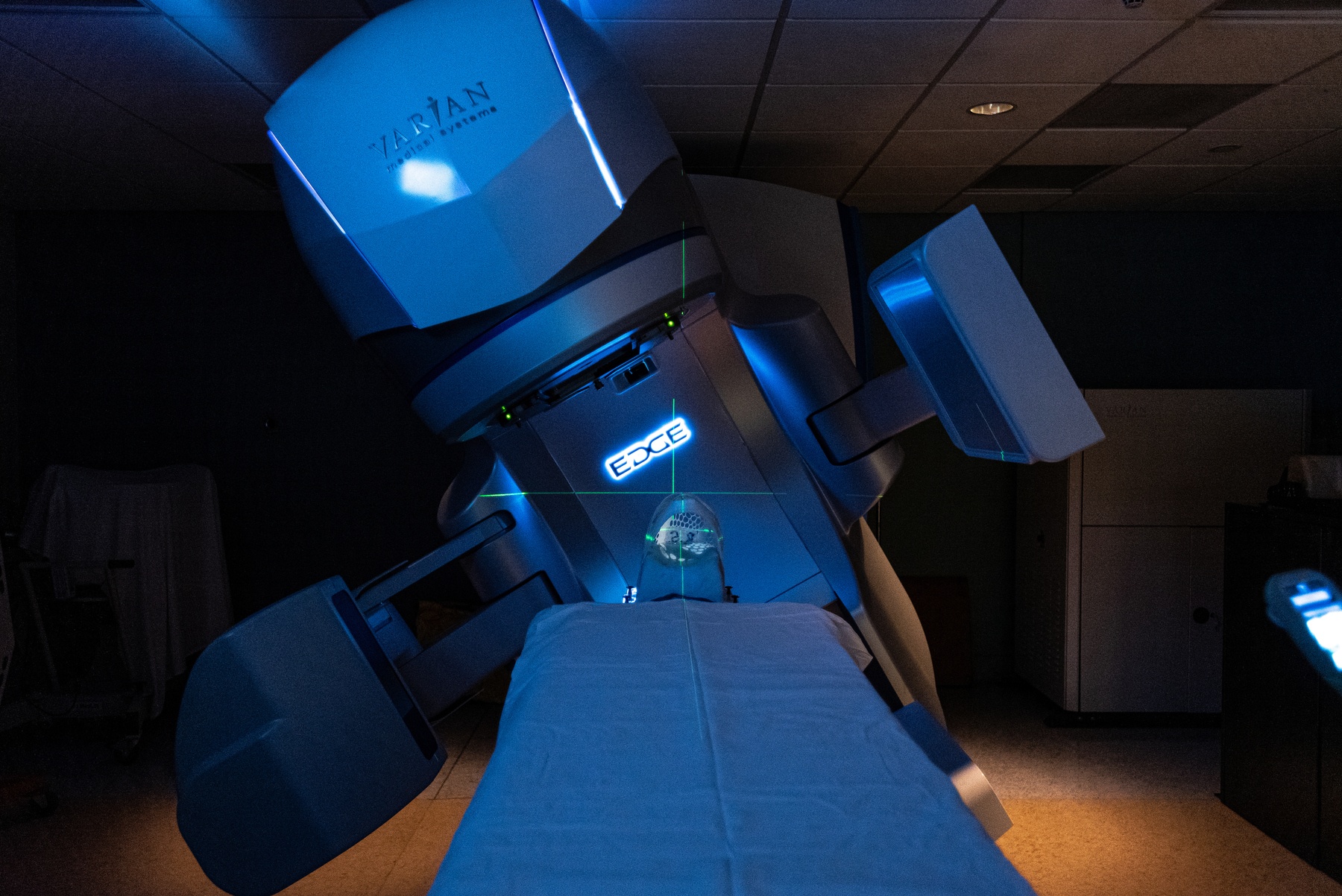
Radiosurgery & Radiation Oncology for Pituitary Region Tumors
Precision stereotactic radiosurgery & stereotactic radiotherapy are safe and effective treatments for pituitary-region tumors that cannot be completely removed by surgery or controlled with medications.
While most pituitary and related skull base tumors can be completely removed with surgery, others require additional treatments including chemotherapy, immuno-therapy and/or radiotherapy. For such patients with residual pituitary adenomas that cannot be helped with further surgery, and patients with related residual tumors such as craniopharyngiomas, clival chordomas, and sinonasal carcinomas, focused radiation or radiosurgery is often indicated to halt tumor growth.
Determining whether stereotactic radiosurgery (SRS) or stereotactic radiotherapy (SRT) is appropriate and safe for a given patient depends on several factors, most importantly the tumor type, its precise location relative to the optic nerves and chiasm, its growth rate and what prior treatments have been given.
Our comprehensive team approach which includes our radiation oncologists, neuro-oncologists, medical oncologists and neurosurgeons, allows for a refined treatment plan for each patient using the latest radiation delivery technology.
Meet Our Radiation Oncologists
What is Radiosurgery?
Stereotactic Radiosurgery (SRS) is a single dose or up to 5 doses of highly focused radiation delivered to a tumor or vascular malformation. Radiosurgery is frequently used to treat brain, pituitary and skull base tumors that are not amenable to complete surgical removal or in patients with smaller metastatic brain tumors. Radiosurgery can be delivered by a linear accelerator such as by our Varian Edge or by the Gamma Knife or Cyberknife; the effectiveness of these different forms of radiosurgery in terms of stopping tumor growth appears to be relatively equal. For tumors that are less than 3 mm away from the optic nerves or optic chiasm, fractionated (multiple lower dose radiation treatments) stereotactic radiation (SRT) is typically used to avoid damage to the optic nerves.
Pituitary & skull base tumor types often treated with SRS: residual meningiomas, pituitary adenomas, chordomas, schwannomas.
What is Stereotactic Radiotherapy?
Stereotactic Radiotherapy (SRT) is delivery of multiple doses of radiation therapy (up to 30 daily doses) given in a focused fashion to treat a tumor or vascular malformation that is not amenable to a single high dose of radiation (radiosurgery). For tumors that are less than 3 mm away from the optic nerves or optic chiasm or critical brainstem structures, fractionated stereotactic radiation (SRT) is typically used to avoid damage to these critical normal structures. This type of focused stereotactic radiation method allows delivery of a maximal tumor dose to the tumor while minimizing radiation to normal structures.
Pituitary & skull base tumor types often treated with SRT: residual meningiomas, pituitary adenomas, craniopharyngiomas, chordomas, schwannomas, sinonasal carcinomas.
What is Whole Brain Radiation (WBRT)?
Whole-brain radiation therapy (WBRT) can be used to treat pituitary and skull base tumors, as well as other brain tumors. WBRT is delivery of multiple fractions of radiation to a large area of the brain given over several days or weeks. WBRT is used less frequently now that SRS and SRT are available.
Pituitary tumors
WBRT can be used to treat pituitary tumors that can’t be completely removed by surgery or if the tumor returns after surgery.
Skull base tumors
WBRT can be used as the primary treatment for skull base tumors in people who can’t have surgery due to age or other health conditions.
